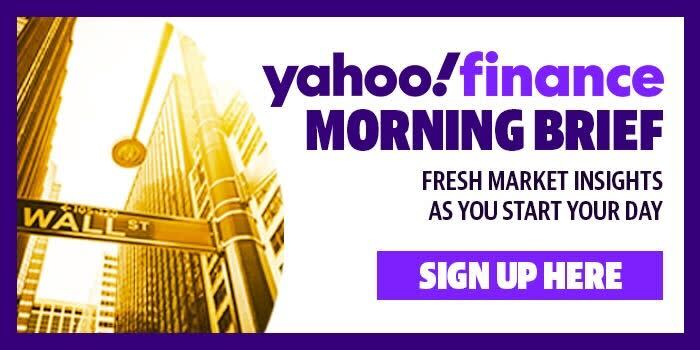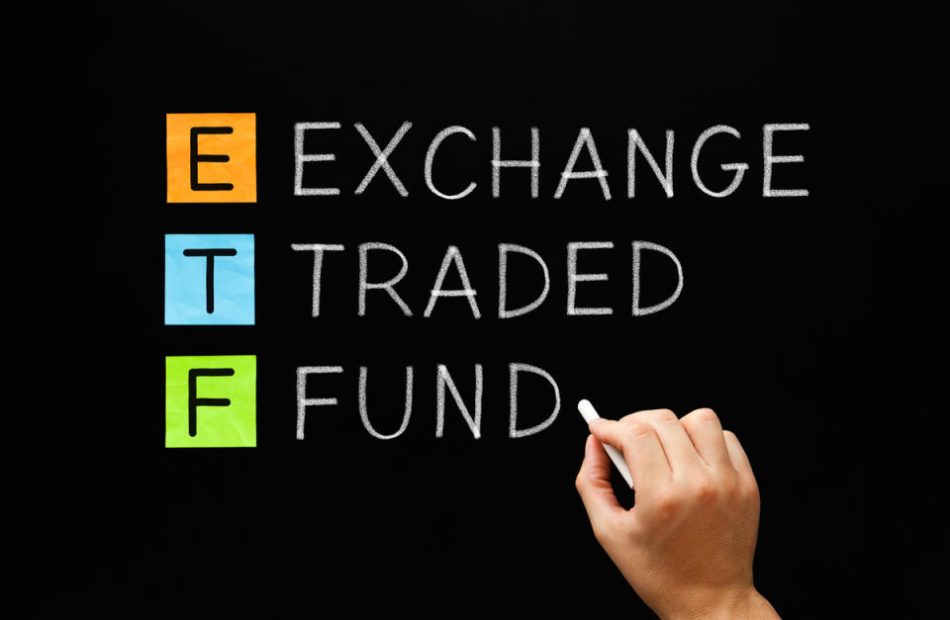You Won't Believe How Much High-Income Earners Save for Retirement
SmartAsset and Yahoo Finance LLC may earn commission or revenue through links in the content below.
If you’ve got more money, you’ve got more retirement options. High-income earners have substantial resources at their disposal, presenting the potential for massive gains and crushing losses. However, practical strategies and careful financial decisions can help you retire as a multi-millionaire. High-income earners often have different retirement needs than others. Here’s how much high-income earners are saving and how to get your savings on track.
If you’re falling behind on your retirement savings goals, a financial advisor can help you create a financial plan.
How Much High-Income Earners Have Saved for Retirement
A high-income earner is an individual or household that earns a substantial amount of money compared to the average income in the country. High-income earners in the United States make over $500,000, putting themselves in the top 1% of the wealthiest households in the country. For a comparison, the median household income in the United States in 2022 was $74,580. As a result, you must make over seven times the typical household income to be a high-income earner.
While saving for retirement has no one-size-fits-all answer, high-income earners usually save more because of their financial abilities. Specifically, high-income earners save $2.68 million by their mid-to-late sixties.
Remember, having a high income doesn’t automatically equate to having a secure retirement fund. Proper financial planning, budgeting and investing are crucial for anyone, regardless of income level, to ensure a comfortable retirement. Additionally, factors like lifestyle choices, debt levels and unexpected expenses can all impact how much an individual or household can save for retirement.
Average Retirement Savings By Age of High-Income Earners
High-income earners start with significant retirement savings and accumulate more throughout the decades.
Let’s take a look at how much each age group has saved for retirement in 2022. Data comes from the Federal Reserve Board and is based on the mean amount for each age group:
Based on the data, retirement savers under age 35 saved almost one-tenth as much as those 75 and older; and almost one-third as much as those between ages 35 and 44. Retirement savers between ages 65 and 74 saved the most — over 12 times more than those under age 35.
A financial advisor can help you build a plan for your income and net worth. Get matched with a financial advisor today.
Where Your Retirement Savings Stand
Evaluating your current retirement savings is a crucial but challenging task as you work your way to your golden years. A detailed retirement plan incorporates your monthly budget, savings goals and lifestyle, among other factors.
For example, you might decide to save specific amounts when you reach a certain age, such as three times your salary by age 40. On the other hand, you could set one savings goal, such as $3 million by age 65.
Additionally, your savings method is foundational to your plan. You could save 10% of your salary every year or set a stringent monthly budget and dump as much as possible into various assets.
Remember, your investment strategy is as critical as the money you set aside. For instance, choosing low-fee investments, maxing out your accounts (401(k)s and IRAs), and automating savings will help boost your nest egg as you go. Furthermore, minimizing debt means you’ll have more to put towards retirement.
The essence of retirement is setting specific savings goals and following a disciplined approach to achieve them. That being said, financial obstacles (divorce, education for children, etc.) and temptations to spend more in the present can hinder anyone’s retirement savings plan. As a result, consulting a financial expert could help you create and execute your plan.
How to Get Your Savings on Track
High-income earners have unique opportunities and challenges when it comes to retirement planning. Here are four common strategies to help get your retirement savings on track:
-
Maximize contributions to tax-advantaged accounts. Contribute the maximum allowable amount to your tax-advantaged retirement accounts. In 2023, the maximum annual contribution for your 401(k) is $22,500 ($23,000 in 2024); and $6,500 for your IRA ($7,000 in 2024). Additionally, catch-up contributions are available to savers age 50 or older, increasing maximum contributions by $7,500 for 401(k)s and $1,000 for IRAs in both 2023 and 2024.
-
Consider non-qualified deferred compensation plans. Non-Qualified Deferred Compensation (NQDC) plans have no contribution limits and more flexible withdrawal rules. These plans are available only for executive-level roles high-income earners often occupy, and can offer these employees a unique tax advantage by allowing them to set aside significant portions of their income for retirement beyond a 401(k)’s limits.
-
Expand your investment types. Open a brokerage account, buy real estate, or become a stakeholder in a small business. These alternatives could help diversify your portfolio and mitigate risk. Remember, each asset has specific tax implications.
-
Avoid lifestyle inflation. This will involve making intentional financial choices to prevent your expenses from rising with your income. Start by setting clear financial goals, both short- and long-term, to give yourself a clear sense of direction. Create a budget to track your income and expenses, distinguishing between essential needs and discretionary spending. Automate your savings and investments so a portion of your income consistently goes towards your financial goals. Then review and adjust your budget to align it with your evolving financial situation and goals.
You can also consider speaking with a financial advisor if you are interested in professional advice for your circumstances and goals.
Bottom Line
High-income earners can save a lot of money. But, they will need to take effective steps to secure their financial future. Key steps include maximizing contributions to tax-advantaged accounts, considering non-qualified deferred compensation plans and diversifying investments.
Tips for High-Income Earners Saving for Retirement
-
A comfortable retirement isn’t automatic, regardless of your income level. Fortunately, a financial advisor can help you tackle specific challenges for your retirement needs. SmartAsset’s free tool matches you with up to three vetted financial advisors who serve your area, and you can have a free introductory call with your advisor matches to decide which one you feel is right for you. If you’re ready to find an advisor who can help you achieve your financial goals, get started now.
-
Taxes and lifestyle can drain your finances, drying up your savings capacity. Here’s where high earners lose most in these areas and how to counteract them.
-
Keep an emergency fund on hand in case you run into unexpected expenses. An emergency fund should be liquid — in an account that isn’t at risk of significant fluctuation like the stock market. The tradeoff is that the value of liquid cash can be eroded by inflation. But a high-interest account allows you to earn compound interest. Compare savings accounts from these banks.
-
Are you a financial advisor looking to grow your business? SmartAsset AMP helps advisors connect with leads and offers marketing automation solutions so you can spend more time making conversions. Learn more about SmartAsset AMP.
Photo credit: ©iStock.com/fizkes, ©iStock.com/szefei, ©iStock.com/brizmaker
The post How Much High-Income Earners Have Saved for Retirement appeared first on SmartReads by SmartAsset.
For tech bulls, a troubled AI trade is a buying opportunity: Morning Brief
This is The Takeaway from today’s Morning Brief, which you can sign up to receive in your inbox every morning along with:
A distressed AI trade is hard to pass up.
The doldrums of September have already hit investors, making the warnings of a historically rough month for stocks ring true. Big Tech names leading the market sell-off throw into question what will lead stocks higher as investors rotate to other sectors. And among the other immediate challenges, the threat of regulation is ramping up.
But “near-term headwinds” is another way of saying “attractive buying opportunities” for AI bulls and those analysts who see the light.
This week’s reported escalation of the DOJ’s probe into Nvidia (NVDA) marked the latest snag in a moment of uncertainty. (The company said it has been in contact with the agency, but has not received a DOJ subpoena as reported regarding business practices around AI processors.)
What is clear from the still-high prices, however, is that Wall Street isn’t debating whether AI technology and its biggest players will usher in game-changing results. That belief has already crystallized. Instead, all the impediments to potential profit have led to mere haggling details over price.
Analysts at Bank of America reiterated their Buy recommendation for Nvidia Wednesday, framing the AI king’s short-term hiccups and hurdles as potential temporary discounts. The stock’s array of difficulties was presented clearly enough, from super chip delays to questions over AI’s massive investment costs to the season’s harsh reputation.
But what one might perceive as toxic traits could be another’s green flags. The report gave Nvidia a price target of $165, an upside of more than 50% from Thursday’s close. And from the way Nvidia was litigating the nomenclature of its subpoena (“Civil Investigative Demand”), we’re clearly seeing a bullish company that’s saying, “If you don’t accept me at my heightened regulatory scrutiny, you don’t deserve me at my ATH.”
One of the reasons it’s hard to predict what will come of the Justice Department’s efforts is the multitude of other ongoing cases targeting the tech sector, all with uncertain outcomes, on the edge of a new presidential administration, as well as a history of inaction.
For Nvidia, antitrust officials are seeking to learn if the company is wielding its market power to keep customers locked into their business. Complicating matters is that some of their buyers have or are developing their own custom chips. And, as analysts point out, Nvidia’s cloud customers have the resources and the sophistication to source AI infrastructure from multiple vendors.
Bank of America analysts are taking a wait-and-see approach, even as they acknowledge that more government scrutiny into Nvidia’s leading chips position poses a risk. “Until we have more details, we assume no specific material impact on NVDA’s fundamental opportunity.”
This newsletter asked last week if the AI trade was entering a new, diminished phase or if recent troubles were just a blip. It’s not hard to see that valuations have fallen. But that’s only served as a louder invitation to climb in.
Hamza Shaban is a reporter for Yahoo Finance covering markets and the economy. Follow Hamza on X @hshaban.
Click here for the latest technology news that will impact the stock market
Read the latest financial and business news from Yahoo Finance
This U.S. Town Is Offering $20,000 To Relocate. Here's How To Secure $10,000 In Cash And $10,000 For Renovations
If you’re thinking about moving, Cumberland, Maryland, might just make it worth your while. This small town, located near the Maryland-Pennsylvania border, offers a unique incentive to attract new residents.
Cumberland provides up to $20,000 to families who relocate within its city limits through a new program. Here’s a simple breakdown of how to take advantage of this offer.
Don’t Miss:
What’s On The Table?
Cumberland is offering a total of $20,000, split into two parts:
- $10,000 in Relocation Cash: This is just for moving to Cumberland. The cash will be provided when you close on your new home.
- Up to $10,000 for Home Renovations or a Down Payment: This is a dollar-for-dollar match. If you plan to renovate an existing home or need help with a down payment on a new home within the city, Cumberland will match your investment up to $10,000.
Trending: Will the surge continue or decline on real estate prices? People are finding out about risk-free real estate investing that lets you cash out whenever you want.
To qualify for this program, you need to be at least 18 years old and legally able to work in the U.S. You must be moving from outside Allegany County and plan to live within Cumberland’s city limits.
Employment-wise, you should have full-time remote work, local employment, proof of self-employment, or start a new job in the area. You’ll also need to apply and get approved before relocating, and once approved, you have six months to make the move.
Lastly, you must purchase a home valued at least $150,000 in Cumberland. It must be your primary residence for at least five years, or you’ll have to pay back the money.
See Also: Unlock the hidden potential of commercial real estate —This platform allows individuals to invest in commercial real estate offering a 12% target yield with a bonus 1% return boost today!
Why Cumberland?
Cumberland is a small town with fewer than 20,000 residents but has much to offer. It’s located along the Potomac River and is just a couple of hours from Baltimore, D.C., and Pittsburgh in an area known for its natural beauty. The area has 70,000 acres of outdoor adventure in Allegany County, often called the “Mountainside of Maryland.”
The town has a rich history, a low cost of living, and a welcoming community. It has invested in modernizing its downtown while preserving its small-town charm. Its reliable internet connectivity makes it a good spot for remote workers.
Trending: This city is the clear winner of Zillow’s 2024 Home Value Forecast —No surprise as the number of millionaires there grew by 75% in the last decade.
How to Get Started
If you want to make Cumberland your new home and take advantage of this $20,000 offer, apply for the program. If you’re accepted, you’ll have six months to move. Remember, the program has limited spots, so applying sooner rather than later is wise.
Read Next:
Market News and Data brought to you by Benzinga APIs
© 2024 Benzinga.com. Benzinga does not provide investment advice. All rights reserved.
Forget the 4% Rule? Here's What You Should Really Be Looking at During Retirement.
Everyone’s retirement is different, but we all have a common goal: ensuring our retirement savings last long enough.
The 4% rule is arguably the go-to guideline for determining how quickly you can spend your savings. It states that a retiree can withdraw 4% of their nest egg’s initial value annually, adjusted for inflation. In other words, someone who retires with $1 million would withdraw $40,000 annually, increasing it slightly every year to adjust for inflation.
It’s a good starting point for developing some basic frameworks but is hardly a retirement plan. The problem with painting with broad strokes is that you’ll never fill in the finer details.
There are some considerations when applying the 4% rule and some essential tips to ensure you have the right plan for your needs. Here is what you need to know.
The 4% rule has some issues
I’m not picking on the 4% rule, but people shouldn’t use it to plan their retirement finances. It’s a guideline, not an A-to-Z plan. Here are some potential problems with the 4% rule:
It doesn’t account for market volatility
One of the biggest problems with the 4% rule is it doesn’t account for the market volatility your nest egg could face. The stock market has historically averaged annual returns between 8% and 10%, but those year-to-year swings could be up or down 20% to 30% in any given year.
Suppose something happens and your nest egg takes a big hit the year you retire or shortly afterward; mathematically, you’ll deplete your savings faster. Luck plays a role in investing, which the 4% rule doesn’t account for very well.
Some living expenses could inflate faster
Shelter and healthcare are big-ticket living expenses for most retirees. Both have soared since the pandemic and projecting what those costs may look like years later in life is challenging.
Unfortunately, America’s soaring debt levels mean that future retirees, especially those with decades before retirement, shouldn’t assume that welfare programs like Medicare will cover as much as they do today. Whether healthcare, food, transportation, or housing, essential living expenses could realistically outrun the 4% rule.
It’s not specific to you
Lastly, the 4% is a general guide, not tailored to your financial situation. The typical U.S. worker retires between 63 and 65 with a median nest egg of $200,000. You might have more or less saved or retire earlier or later than the average.
You can get away with sloppy planning early in retirement but could face big problems if your savings dry up years later when you’re too old to work anymore. Additionally, you don’t want to scrimp and save your whole life only to leave a ton of money on the table because you lived too conservatively.
Consider these potential changes
The 4% rule gives you a basic idea of your lifestyle in retirement, but you shouldn’t stop there. Consider these additional tips to help you live your best retirement possible.
Evaluate your timeline
The 4% rule aims to stretch savings for at least 30 years. However, the math may not add up. The average life expectancy in the U.S. is 77 years. In other words, the average person lives roughly 12 to 14 years after retirement. The 4% rule could be too conservative unless you’re retiring early. Consider building a retirement plan with multiple time frames in mind. You want to know your savings will last without overly restricting your lifestyle to the point it hurts your quality of life.
Revisit your investment strategy
Many people retire with less than they had hoped. However, your savings doesn’t stop growing once you retire. You may be able to help your portfolio grow through retirement by adjusting your investment strategy. The 4% rule assumes a portfolio that’s 60% stocks and 40% bonds. You should never take more risk than you’re comfortable with, but getting a little more aggressive could make a big difference in your retirement portfolio over the 10-plus years after you stop working.
Consider dynamic spending
Lastly, the 4% rule assumes you’ll withdraw roughly the same amount each year from your savings. As mentioned before, a market downturn could disrupt your retirement plans. If your finances allow it, consider a dynamic system where you withdraw lower amounts when the market declines and higher amounts when it is up. That could mean some simple lifestyle choices, like saving that big vacation for when the market has a good year or stretching that old car a little longer. These small changes could stretch your nest egg years longer.
Have questions? Consult the pros
Retirement planning is a complex topic. If you have questions or feel overwhelmed by the process, don’t hesitate to consult with a professional advisor. While it will cost you some money to get professional advice, the benefits of an effective retirement plan will far outweigh them.
Retirement planning is the financial foundation for a good chunk of your life. Skimping on preparation or taking retirement lightly only hurts you and can cost you thousands of dollars in taxes and opportunity costs. Knock your retirement plan out of the park by going beyond the 4% rule.
The $22,924 Social Security bonus most retirees completely overlook
If you’re like most Americans, you’re a few years (or more) behind on your retirement savings. But a handful of little-known “Social Security secrets” could help ensure a boost in your retirement income. For example: one easy trick could pay you as much as $22,924 more… each year! Once you learn how to maximize your Social Security benefits, we think you could retire confidently with the peace of mind we’re all after. Simply click here to discover how to learn more about these strategies.
View the “Social Security secrets” »
The Motley Fool has a disclosure policy.
Forget the 4% Rule? Here’s What You Should Really Be Looking at During Retirement. was originally published by The Motley Fool
Illinois trucking company with 480 drivers abruptly ceases operations
An Illinois-based trucking and logistics company, which contracted with the U.S. Postal Service to haul mail and had over 650 employees, including more than 480 drivers, abruptly ceased operations Thursday, according to sources familiar with the closure.
Former truck drivers for Midwest Transport Inc. (MTI), headquartered in Robinson, Illinois, told FreightWaves that they received telephone calls from their regional managers late Thursday notifying them the company was winding down operations.
As of publication on Friday, MTI has not issued a formal statement about what led to the closure. However, FreightWaves confirmed with some former senior managers and truck drivers who worked for the mail contractor that the company was ending operations. They did not want to be named in the article for fear of retaliation.
MTI, founded in 1980, operated key terminals in Greenup, Illinois; Harmony, Pennsylvania; Memphis, Tennessee; and two terminals in Tampa and Jacksonville, Florida, according to its website.
MTI had over 480 drivers and 428 power units, according to the Federal Motor Carrier Safety Administration’s SAFER website.
FMCSA data shows the company’s trucks had been inspected 244 times, and 65 had been placed out of service for a 27% out-of-service rate over the preceding 24-month period. That is significantly higher than the industry’s national average of around 22%.
MTI’s drivers had been inspected 564 times, and 16 were placed out of service over a two-year period, resulting in a nearly 3% out-of-service rate. That is less than half the industry’s national average of 7%, according to FMCSA.
The trucking company had 21 injuries and 42 tow-aways over the past 24 months.
According to the SAFER database, MTI was cited for acute/critical violations in two categories: controlled substances/alcohol and driver fitness.
A check on SAFER shows that MTI’s common, contract and broker authorities remain active. MTI had two compliance reviews on July 7 and July 25, according to FMCSA data.
As of publication Friday, MTI had not filed a notice of its impending closure in Illinois, Tennessee, Pennsylvania or Florida.
One longtime former MTI driver said he was surprised by the news the company was ceasing operations but said that drivers had started receiving notices over the past few months to ensure their log books were certified after each run and to watch their speed and improve their on-time performance.
“I don’t know what happened because we had a lot of postal contracts all over the U.S.,” a former MTI driver told FreightWaves. “I [don’t know if] the USPS is just finding out like us [that] the mail will be sitting on the docks on Monday.”
A media spokesperson with the Postal Service did not immediately return FreightWaves’ request for comment.
This is a developing story.
Do you have a news tip or story to share? Send Clarissa Hawes an email or message @cage_writer on X, formerly Twitter. Your name will not be used without your permission.
The post Illinois trucking company with 480 drivers abruptly ceases operations appeared first on FreightWaves.
US IRS enforcement efforts recover $1.3 billion in unpaid taxes, Treasury says
WASHINGTON (Reuters) – The U.S. Treasury and Internal Revenue Service said on Friday that they have recovered $1.3 billion in unpaid taxes from wealthy individuals under new enforcement initiatives funded by $60 billion in IRS modernization spending from the climate-focused Inflation Reduction Act.
WHY IT’S IMPORTANT
Republicans in Congress have long vowed to rescind the 10-year IRS funding passed in 2022, arguing that it would unfairly harass Americans on their taxes. Republican presidential candidate Donald Trump vowed on Thursday to rescind all unspent funds from the Inflation Reduction Act, which include billions of dollars earmarked for the IRS.
The IRS has planned to spend about $10.6 billion of those funds through end of the 2024 fiscal year, which concludes on Sept. 30, leaving nearly $50 billion that could be recouped. But budget forecasters say that doing so would increase the federal budget deficit by more than $100 billion over a decade because the agency would forego stepped-up enforcement.
BY THE NUMBERS:
The Treasury said that in the first six months of a new initiative to target 125,000 wealthy individuals who have not filed tax returns since 2017, it has collected $172 million from 21,000 non-filing taxpayers.
Another initiative to target wealthy individuals with more than $1 million in income and $250,000 in unpaid, recognized tax debts has brought in $1.1 billion to Treasury coffers.
KEY QUOTES
U.S. Treasury Secretary Janet Yellen said the audit rate for millionaires fell by 80% due to budget cuts at the IRS.
“During the previous (Trump) administration, as audit rates on high-income taxpayers fell, the share of audits on taxpayers with incomes under $200,000 increased,” Yellen said in remarks to be delivered at an IRS service center in Austin, Texas. “In 2019, the top one percent of Americans was estimated to owe over one-fifth of unpaid taxes, leaving ordinary Americans to shoulder the burden.”
(Reporting by David Lawder; Editing by Alex Richardson)
History Says This 1 Monster ETF Will Beat the S&P 500 Between Now and 2030
Undoubtedly, the S&P 500 is the top index that investors look at to assess how the stock market is performing. It provides a pretty accurate view, given it’s a benchmark of 500 large and profitable companies.
In the past decade, the S&P 500 has generated a total return of 235%, which turned a $10,000 investment into $33,500 today. That’s an impressive gain.
However, I believe there’s one monster exchange-traded fund (ETF) that will beat the S&P 500 between now and 2030. Here’s the investment vehicle you don’t want to miss.
Concentrated in specific sectors
The S&P 500 has 11 different sectors, so investors naturally gain broad exposure to all parts of the economy. However, some sectors have performed better, such as information technology.
This sector is featured prominently in the Invesco QQQ Trust (NASDAQ: QQQ), making up 51% of its holdings. The QQQ is a fund that tracks the performance of the 100 largest non-financial companies that trade on the Nasdaq stock exchange, providing more niche exposure to certain pockets of the market.
Over the last 10 years, the QQQ has produced a fantastic total return of 412%, which would have more than quintupled your starting capital. However, past performance is never a guarantee of future returns. In my opinion, this ETF is poised to continue outperforming the S&P 500 over the next six or so years.
The QQQ is heavily focused on some of the most innovative and disruptive businesses on the planet. And generally, these are the types of companies that can help drive strong portfolio gains.
Ahead of the curve
The ETF’s top holdings are names that you’re likely familiar with. The “Magnificent Seven” are featured prominently. Apple, Microsoft, Nvidia, Alphabet, Amazon, Meta Platforms, and Tesla combined represent 42% of the portfolio’s assets. The performance of these stocks has a big influence on the QQQ’s trajectory.
In recent years, that’s been a major benefit. These businesses gain from very broad secular trends that are shifting the economic landscape. Areas like cloud computing, digital advertising, digital payments, streaming entertainment, and electric vehicles have helped lift the QQQ higher.
We also can’t forget about artificial intelligence (AI), the revolutionary technology that everyone can’t seem to get enough of. Owning the QQQ means that investors don’t have to try and pick single stocks that will be winners of the AI boom. The ETF provides broad exposure to basically capture the entire trend.
Is now a good time to invest?
As of this writing, the QQQ trades 6% off its peak level from July of this year. The current dip seems like the perfect opportunity to put some money to work. Of course, that’s after you’ve set up an emergency fund and have eliminated all high-interest debt.
Another smart strategy is to dollar-cost average. Instead of trying to accurately predict when the market will bottom out, investors can simply add savings to the QQQ on a regular basis, say every month or quarter. This eliminates market timing and helps encourage continuous investment.
By owning the QQQ, investors have a legitimate shot at beating the S&P 500 between now and 2030, and maybe beyond that. Moreover, because the expense ratio of 0.2% is compelling, more of the returns generated are actually yours at the end of the day.
This winning combination of high return potential, low costs, and a passive strategy is hard to beat. That makes buying the QQQ an easy decision.
Should you invest $1,000 in Invesco QQQ Trust right now?
Before you buy stock in Invesco QQQ Trust, consider this:
The Motley Fool Stock Advisor analyst team just identified what they believe are the 10 best stocks for investors to buy now… and Invesco QQQ Trust wasn’t one of them. The 10 stocks that made the cut could produce monster returns in the coming years.
Consider when Nvidia made this list on April 15, 2005… if you invested $1,000 at the time of our recommendation, you’d have $650,810!*
Stock Advisor provides investors with an easy-to-follow blueprint for success, including guidance on building a portfolio, regular updates from analysts, and two new stock picks each month. The Stock Advisor service has more than quadrupled the return of S&P 500 since 2002*.
*Stock Advisor returns as of September 3, 2024
John Mackey, former CEO of Whole Foods Market, an Amazon subsidiary, is a member of The Motley Fool’s board of directors. Suzanne Frey, an executive at Alphabet, is a member of The Motley Fool’s board of directors. Randi Zuckerberg, a former director of market development and spokeswoman for Facebook and sister to Meta Platforms CEO Mark Zuckerberg, is a member of The Motley Fool’s board of directors. Neil Patel and his clients have no position in any of the stocks mentioned. The Motley Fool has positions in and recommends Alphabet, Amazon, Apple, Meta Platforms, Microsoft, Nvidia, and Tesla. The Motley Fool recommends Nasdaq and recommends the following options: long January 2026 $395 calls on Microsoft and short January 2026 $405 calls on Microsoft. The Motley Fool has a disclosure policy.
History Says This 1 Monster ETF Will Beat the S&P 500 Between Now and 2030 was originally published by The Motley Fool
Orkes To Showcase Workflow Orchestration at Gartner Global Conferences and Drive Industry Adoption of New Category of Tools
CUPERTINO, Calif., Sept. 06, 2024 (GLOBE NEWSWIRE) — Orkes, a provider of advanced microservices orchestration tools, today announced it will elevate its global presence with its participation in two major Gartner conferences to help define the future of workflow orchestration and drive industry advancements in cloud and AI use.
Orkes is working to create a new category in workflow orchestration and establish a dedicated Gartner Quadrant to address the shifting needs of the industry. Orkes Conductor is a platform for building distributed applications and AI agents that allows developers to build highly scalable, resilient applications and agents by orchestrating their code, microservices and eventing systems. Conductor addresses the growing need for tailored solutions that enhance how developers design, code, and manage workflows with its flexible orchestration tools. This initiative is designed to help businesses to scale more effectively while minimizing disruptions.
The company will participate at the Gartner Application Innovation & Business Solutions Summit and the Gartner IT Symposium/Xpo™ 2024 Conference, both pivotal platforms where industry leaders will discuss the future of software engineering, application innovation and generative AI. Orkes will contribute strategic insights and practical advice while navigating emerging trends and technologies for enterprise and mid-sized companies.
“Orkes is actively shaping new market categories with our Conductor platform,” said Jeu George, CEO and co-founder of Orkes. “Our solutions are crucial for businesses managing complex workflows and AI integrations. As we participate in these global conferences, we see increased global adoption and significant interest from major enterprises relying on Orkes for effective orchestration and operational efficiency.”
At the Gartner Application Innovation & Business Solutions Summit in London, UK, on September 9-10, 2024, find Orkes at Booth 503. Join their session, “Integrate AI into Apps with Netflix Conductor,” on September 10, from 1:30 PM to 1:50 PM BST.
Orkes will also be at the Gartner IT Symposium/Xpo™ 2024 in Queensland, Australia, on September 9-11, 2024, at Booth 1016.
About Orkes
Orkes is the fastest way to scale distributed systems across microservices, APIs, AI models, and event-driven architectures for any language, framework, and level of complexity. Founded in 2021 by seasoned product and engineering leaders from Google, Netflix, AWS, and Microsoft, Orkes provides an enterprise-grade, cloud-hosted version of the popular Conductor open-source platform used by Fortune 100 companies and international corporations. Backed by Battery Ventures, Nexus Venture Partners and Vertex Ventures US, the company is headquartered in Cupertino, CA. Learn more at www.orkes.io.
Media Contact
Skyya PR
orkes@skyya.com
A photo accompanying this announcement is available at https://www.globenewswire.com/NewsRoom/AttachmentNg/23bbe6ec-8d32-4dfb-9fd5-d853152be7df

Market News and Data brought to you by Benzinga APIs
© 2024 Benzinga.com. Benzinga does not provide investment advice. All rights reserved.
Plans for Indoor Entertainment Venue along East Riverside Emerge
Mid-size, state-of-the-art facility to join Austin’s live music scene
AUSTIN, Texas, Sept. 5, 2024 /PRNewswire/ — A state-of-the-art, mid-size, indoor entertainment venue is being planned for a mixed-use project on East Riverside Drive.
The venue will feature approximately 65,000 square feet and offer an ideal spot for a diverse range of live shows, community events, and special events. It will be located at the Northwest corner of East Riverside Drive and Crossing Place, serving as an anchor to the first phase of River Park, a mixed-use project being master developed in a joint venture between Partners Group, acting on behalf of its clients, and Austin-based Presidium.
“Live music is in Austin’s DNA and we’re excited to bring this opportunity forward together with several partners,” said Michael Piano, vice president of development for Presidium.
The indoor entertainment facility will be nestled into the first phase of River Park, surrounded by residential buildings, ground floor retail, streetscapes, and a public park.
“This new venue embodies our transformational approach to real estate investing. We’re creating a unique space for Austin that will offer long term value for the community,” said Matt Bosquez, Member of Management, Real Estate Americas, at Partners Group, which is one of the largest firms in the global private markets industry.
Piano added: “We have carefully vetted the path forward and are committed to the vision of creating a thriving mixed-use ecosystem. This will start the project off with a series of dynamic gathering spaces for all to enjoy.”
To bring the venue to life, Presidium has entered into an agreement with a third-party developer and operator, ensuring high building standards and an exceptional entertainment experience. While the partners cannot be disclosed at this time, the vision is to host local and national performances, community programs, and special events that enhance the cultural offerings and community connections in the East Riverside neighborhood. Piano adds that there is pent-up market demand in Austin for a mid-size, indoor venue, which meets the needs of rising stars and bridges an existing market gap between smaller, local venues and larger arenas.
The overall vision for River Park calls for a mix of office, retail, entertainment, public parks, trails, and residential, including Affordable Housing. Located just east of Oracle’s Austin headquarters, the 109 acres are bordered by Roy G. Guerrero Colorado River Metro Park, East Riverside Drive, Pleasant Valley Road and Country Club Creek. More than 30 acres of publicly accessible open space, parkland and urban trails leading into Guerrero Park are anticipated. The site will also integrate with Capital Metro’s existing and planned multi-modal transportation network.
A timeline for the music venue has yet to be determined, while build out for the entire River Park development is anticipated to take 10 to 20 years.
About Partners Group
Partners Group is one of the largest firms in the global private markets industry, with around 1,800 professionals and approximately USD $150 billion in assets under management. The firm has investment programs and custom mandates spanning private equity, private credit, infrastructure, real estate, and royalties. With its heritage in Switzerland and its primary presence in the Americas in Colorado, Partners Group is built differently from the rest of the industry. The firm leverages its differentiated culture and its operationally oriented approach to identify attractive investment themes and to build businesses and assets into market leaders. For more information, please visit www.partnersgroup.com or follow us on LinkedIn.
About Presidium
Founded in 2003, Presidium is a Texas-based real estate developer, owner, and operator with a 20-year operating history and an existing real estate portfolio totaling approximately $2 billion assets under management (AUM). We represent a spectrum of disciplines, including acquisitions, development, property management, asset management, construction, law, finance, accounting, special servicing, and public-private partnerships. At Presidium, our mission is to craft vibrant and unique communities, deliver exceptional returns for our partners, and nurture a collaborative, supportive atmosphere for our employees. Together, we strive to make a meaningful impact on the lives we touch and the neighborhoods we enrich. For more information about Presidium, visit www.presidiumre.com.
![]() View original content:https://www.prnewswire.com/news-releases/plans-for-indoor-entertainment-venue-along-east-riverside-emerge-302239777.html
View original content:https://www.prnewswire.com/news-releases/plans-for-indoor-entertainment-venue-along-east-riverside-emerge-302239777.html
SOURCE Presidium
© 2024 Benzinga.com. Benzinga does not provide investment advice. All rights reserved.









